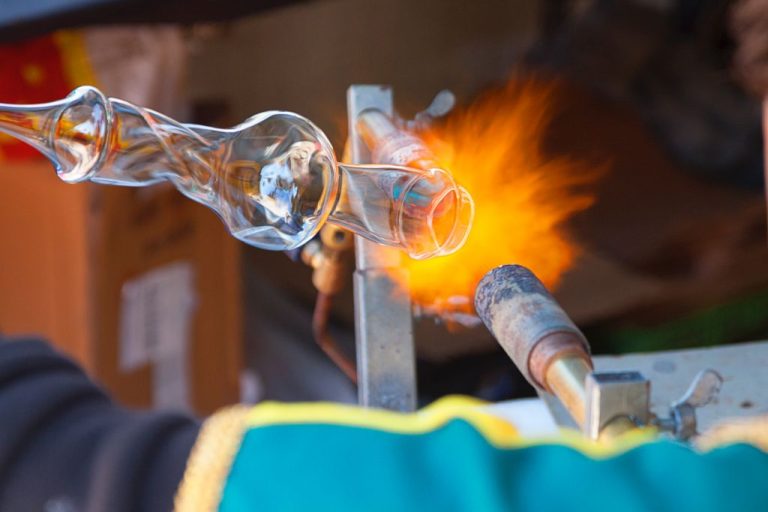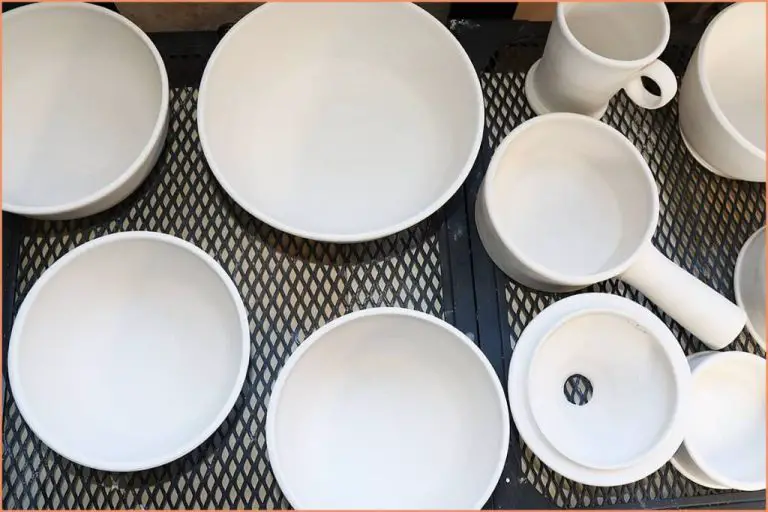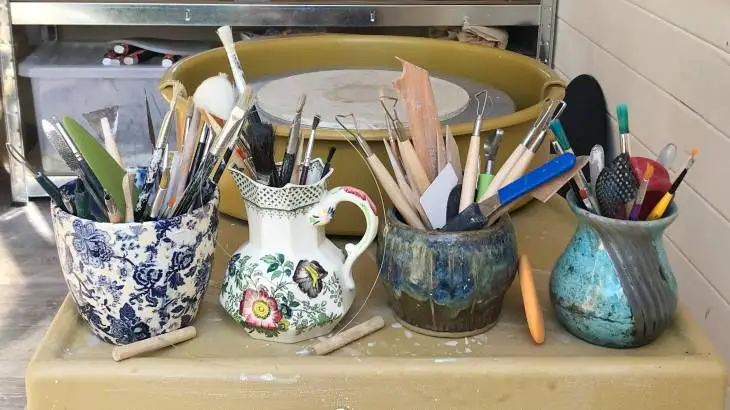Can You Use Oven Bake Clay For Plant Pots?
Oven bake clay, also known as polymer clay or self-hardening clay, is a modeling and sculpting material that cures and hardens when baked in a regular home oven. Unlike traditional clays that require firing in a kiln, oven bake clay contains plasticizers that cause the clay to cure and harden through a chemical reaction when exposed to sufficient heat from a standard kitchen oven. Oven bake clay remains pliable and workable until it is baked. Once hardened through baking, it maintains its shape and becomes durable, lightweight, and easy to paint and decorate.
Oven bake clay is made from PVC resin, stabilizers, fillers, and pigments. It typically has a texture similar to plasticine but can vary from brand to brand. Oven bake clay is an appealing medium for crafters and hobbyists because it requires no special tools or artistic skill to work with. It also comes in a wide variety of colors that can be blended and mixed to create custom hues and effects. When properly baked, oven bake clay produces strong, long-lasting pieces and is therefore well-suited for creating decorative objects like jewelry, figurines, dishes, and plant pots.
Advantages of Using Oven Bake Clay
Using oven bake clay for plant pots has several notable advantages over other materials like ceramics or plastic.
Durability
Once properly baked according to package instructions, oven bake clay achieves an incredibly durable, hardened finish that rivals ceramic and concrete. The finished clay pot will be able to withstand exposure to weather, frequent handling, bumps and scratches while still retaining its shape and structure for many years.
Customizability
Oven bake clay can be easily shaped, molded, carved, textured, and transformed while in its unhardened state. This allows endless customization options not possible with preformed plastic or ceramic pots. Crafters can create their ideal pot shape, size, texture, or decorative accents.
Lightweight
Compared to concrete or ceramic pots, oven baked clay pots made at home are significantly lighter. Their reasonable weight makes the pots much easier to move or hang. The lightweight quality also reduces the chance of damage if the pot is accidentally dropped.
Best Suited Plant Types
When selecting plants for oven bake clay pots, focus on varieties that thrive in small containers and dry soil conditions. The porous terra cotta allows rapid moisture evaporation, so moisture-loving plants may struggle. Some top options include:
Succulents – Succulents store water in their leaves, stems, or roots, adapting them to arid environments. Popular picks like echeveria, jade plant, aloe vera, and haworthia grow well in clay pots.
Cacti – With their specialized structure and thick, waxy skin, cacti are ideal for terra cotta pots. Consider mini cactus varieties like mammillaria, gymnocalycium, or parodia.
Herbs – Heat-loving herbs like rosemary, thyme, sage, and oregano appreciate the excellent drainage clay provides. Just take care not to overwater.
Small Houseplants – Try using clay pots for compact houseplants under 1 foot tall. Spider plant, peace lily, pilea peperomioides, and pothos handle drying soil well.
Preparing and Shaping the Clay
One of the keys to working with oven bake clay for plant pots is properly preparing and shaping the clay. Here are some tips on this important step:
Start by conditioning the clay. Knead it for several minutes until it becomes uniformly soft and pliable. This makes the clay easier to shape without cracking or breaking apart. If the clay is too stiff, let it rest for 5-10 minutes then resume kneading.
Next, roll out the clay using a rolling pin on a smooth, clean surface. Get it to an even thickness, around 1/4 inch or less. Thicker clay will take longer to bake and dry fully. Use extra clay to patch any holes or gaps.
Now you can begin molding and sculpting the softened clay into the desired pot shape and size. Press firmly to remove air pockets but handle gently to avoid tearing. Use silicone molds, stamps, cutters, etc. to add patterns and textures.
Make sure the walls are an even thickness throughout for stability. Sculpt decorative rims, handles, feet and other accents as desired. Let the shaped clay rest for 15-20 minutes before baking.
Baking Instructions
When baking oven-bake clay pots, follow these important instructions:
Temperature – Bake the clay pots at the temperature recommended by the manufacturer, usually between 275°F-325°F. Going over the recommended temp can cause cracking or burning.
Time – Bake clay pots for the time specified on the packaging, generally 60-90 minutes. Larger, thicker projects may require more time. Underbaking can result in weak, brittle pots.
Cooling – After baking, turn off the oven and allow the clay pots to cool down gradually inside for 30-60 minutes. Never remove hot pots directly from the oven as thermal shock can cause cracking and breakage. Let cool completely before handling.
Test smaller pieces first to determine the ideal baking time for your oven before making large projects. The thickness, size and number of items baking simultaneously will impact time needed.
Applying Decorations and Finish
One of the great things about oven-baked clay is that it can be decorated, painted, and sealed once hardened. This allows you to personalize your plant pots and make them truly unique.
Acrylic paints work well for hand painting designs, patterns, or images onto the cured clay. Make sure to use paints designed for clay, ceramic, or glass to ensure proper adhesion. Start with a base coat if desired, then let dry fully before adding additional layers of color. For a smooth finish, dilute the paint slightly with water.
Another option is using ceramic glazes formulated for low-fire clays. These glazes can be brushed or dipped on, then fired again according to package instructions to set the glaze. Glazing provides a shiny, glass-like coating in different finishes.
A clear acrylic sealer or varnish can also be brushed on the finished pieces to seal and protect painted or glazed designs. This helps prevent chipping, fading, and water damage over time. Allow proper drying time between coats.
Decorating the clay pots opens many creative possibilities, from simple designs to elaborate artworks. Just be sure all paints, glazes or finishes are specifically approved for the type of oven-bake clay used.
Creating Drainage Holes
Proper drainage is crucial for plants grown in oven bake clay pots. Without drainage holes excess water will accumulate at the bottom of the pot causing root rot. There are a few simple techniques to create drainage:
Using a Drill
A power drill with a small masonry drill bit is the easiest way to make clean drainage holes. Mark the desired location for the holes on the bottom of the pot before baking. Start with a small pilot hole then increase the size gradually. Aim for 2-4 holes spaced evenly apart for most pots.
With a Nail
A large nail can also be used to create drainage holes. Rotate the nail back and forth applying pressure to wear away the clay. The holes will not be as precise but still functional. Use pliers for better grip and leverage when turning the nail.
Cutting with a Knife
A utility knife with a sharp blade can also penetrate the soft oven bake clay. Score the clay in a circle shape to gradually cut out a hole. Twist the knife as you push into the clay. This takes more effort but can be done without power tools.
Care and Maintenance
Caring for oven bake clay pots properly is important to prevent cracking and extend the life of your creation. Here are some tips:
Avoid sudden temperature changes. Don’t move a hot clay pot straight from the oven onto a cold surface, or vice versa. Allow it to adjust slowly to prevent thermal shock cracking.
Let clay pots dry thoroughly between waterings. Don’t leave standing water inside, which can cause cracks. Pour out excess water that collects in the drainage tray.
Clean gently. Use a soft cloth to dust the outside of unglazed clay. Avoid abrasive scrubbing. For glazed pieces, wash carefully with mild soap and water.
Avoid extreme conditions. Keep clay pots out of freezing temperatures and direct sunlight when possible. Store indoors during winter or very hot weather.
Re-seal periodically. Over time, unglazed clay can absorb moisture and start to leak. Reseal it every year or two using waterproof sealants made for terra cotta and clay.
Handle with care. Clay is durable but can chip or crack if subjected to sharp blows or drops. Transport pots with cushioning and don’t place heavy objects on top.
With proper ongoing care and maintenance, oven bake clay plant pots can last for many years while retaining their beauty.
Troubleshooting Issues
Oven baked clay pots are durable, but may develop some issues over time. Here are some common problems and how to troubleshoot them:
Cracking
Cracks can occur during baking if the clay is too thin in some areas or dried unevenly. Allow your clay creations to air dry completely before baking to prevent cracking. Also avoid extremely thin sections that may be prone to breaking.
Flaking
Clay can start flaking or peeling if it gets very wet or cold. Bring plants indoors during winter or minimize watering to prevent moisture damage. Re-seal any bare clay patches with a clear acrylic sealer.
Fading
Clay pots may fade or discolor with long term sun exposure. Use acrylic paints and sealers rated for outdoor use if decorating pots. Bring pots indoors or move to a shaded area to help preserve colors and finish.
Conclusion
Overall, oven-bake clay is a versatile and creative material for making your own custom plant pots at home. With proper preparation, baking, and care, oven-bake clay pots can be durable, decorative, and functional options for many types of houseplants. Making your own pots allows you to match colors, shapes, sizes to your plants’ needs and your home’s style. While it does take some practice, oven-bake clay is an accessible DIY project for crafty plant parents. As long as you follow instructions carefully for curing and baking, these clay pots will last for many years. With the right techniques, oven-bake clay offers a satisfying hands-on approach to pottery that connects you more closely to your plants.



